This post may contain affiliate links. Please read our disclosure policy.
This article is a recap of some of the things happening in our lives, on our new farm, and is a behind-the-recipe look at the day to day of raising a family in Southern Utah. Enjoy!
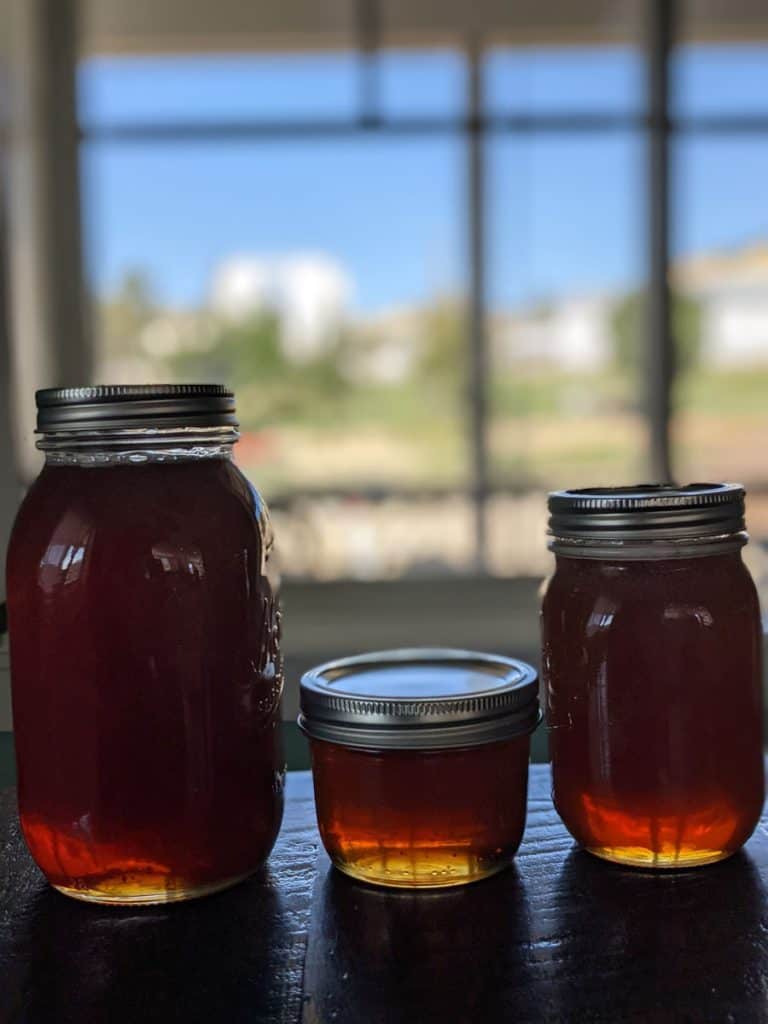
We got bees in the spring and it has been SUCH an adventure! We scored some extra bee keeping suits, a hot knife, and a small 2-frame extractor at a garage sale and that was so great. We had 4 suits so Thomas was awesome about making sure he always had kids go out with him when he needed to take care of the bees. They have learned so much too.
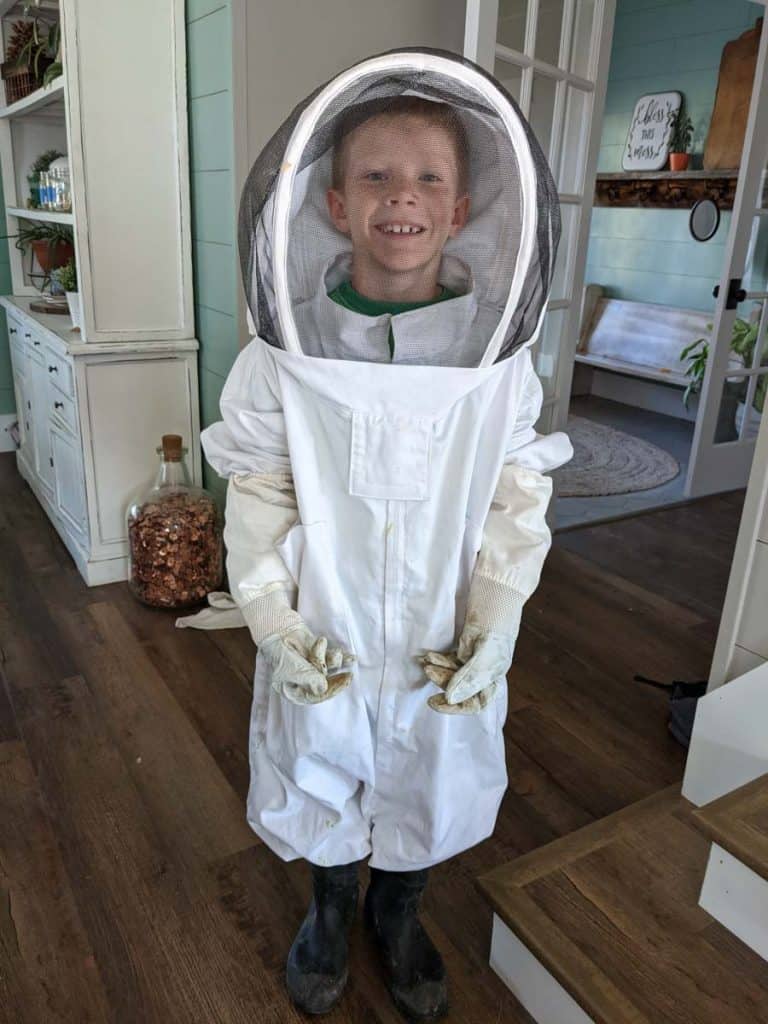
I had no idea how much work was involved with beekeeping and I didn’t even do much of it; this was definitely Thomas’ project. You have to feed your bees (sugar water) when there’s not much in blossom, so for us that was when they came in early spring and then again in October and even still now. They need to eat! We got 10 hives to start with and that meant that we had to do everything 10 times.
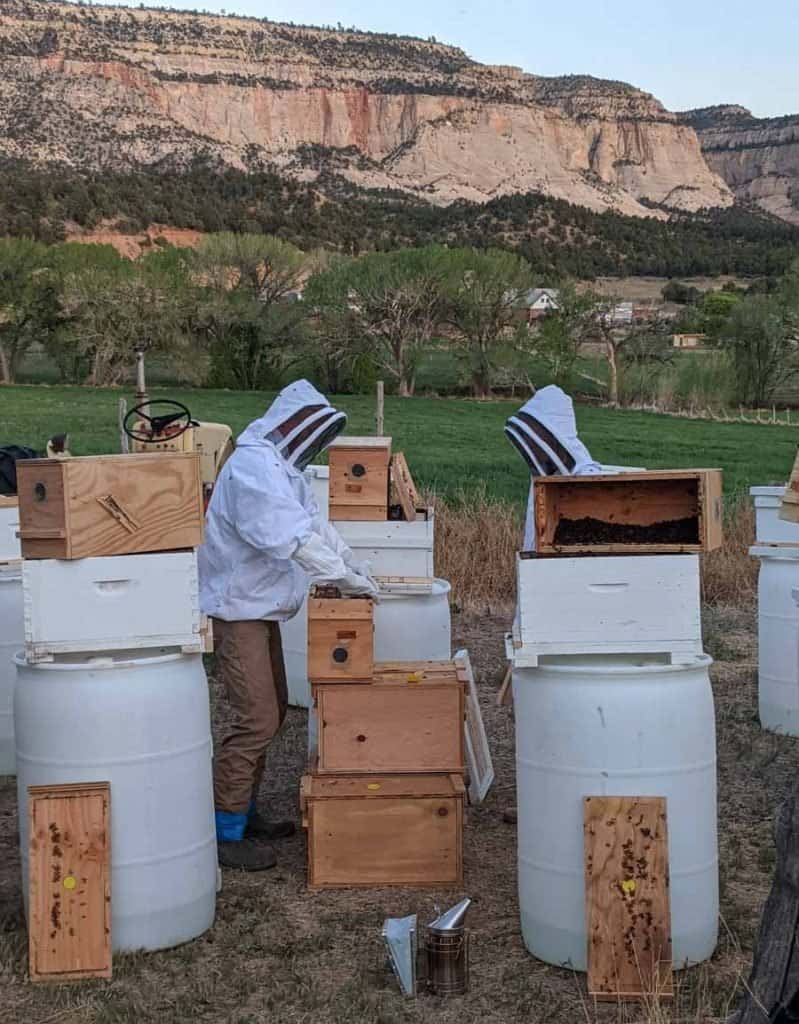
So every few days for the spring and fall you mix up 10+ gallons of sugar water, suit up, pack it out to the hives behind the barn, open them up one by one, dust the bees out of the way, add their food, dust them out of the way again, and return the lid. This sounds so simple but it’s just slow work. It would take a few hours. Thomas works with slow and thoughtful movements in order to not crush any bees if he can help it. It’s hot work too in the suits.
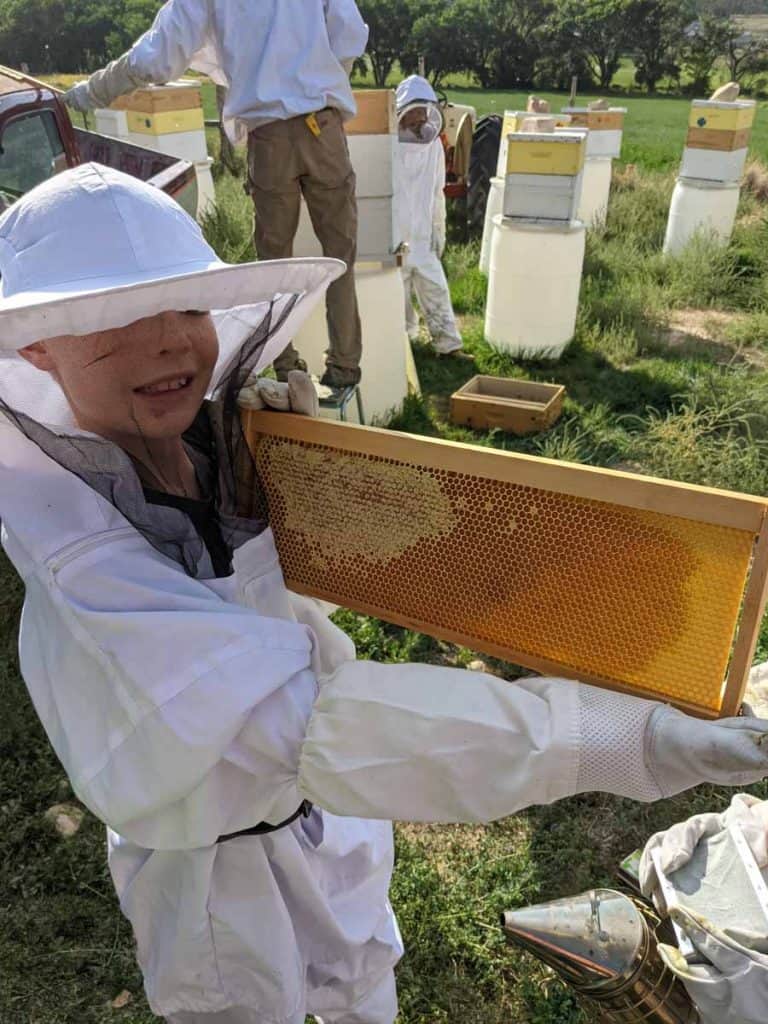
The bees fill up their houses with honey all summer and as Thomas fed them he would check the frames. When they filled up a frame with wax comb, and then honey, and then capped the honeycomb (you can see a little patch of capped honey in the photo above, you can also see quite a bit of uncalled but honey filled comb in the photo). They have 10 of these frames in their hive. When they had filled up most of the 10 frames, he put a second box (we called them the honey box) on top of their hive. You take the top board off the hive, put a screen down, and then put an open-bottomed box on top of the now open-topped hive (the top box has a lid). The screen is the right size to allow the worker bees through but the queen is too big to fit. This way you won’t have a queen or larva (new bees) living or being laid in your honey box, but the workers can still go in and add honey.
He put the honey boxes on throughout the late summer as the bees needed it. Three of the hives were VERY active (and happened to be the most aggressive when dealing with them) and he actually put a second honey box on top of the first (so it was the hive with two additional boxes on it).
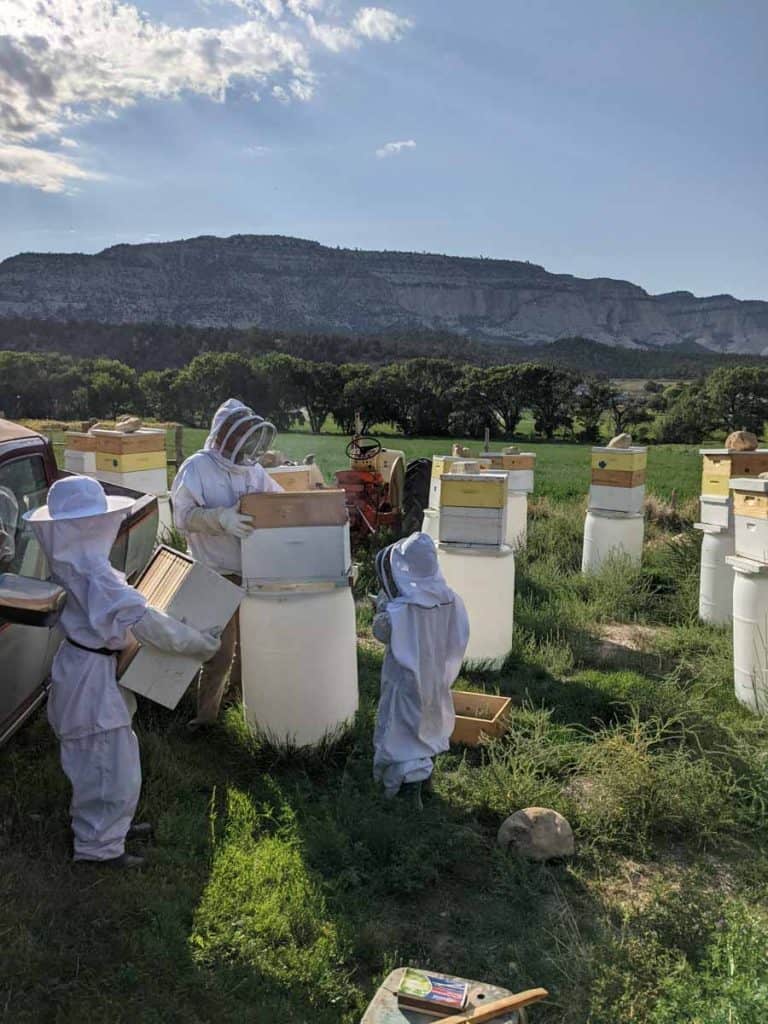
So you stop feeding them when the flowers bloom and we really wanted lots of bee food. I planted 1200 feet of flowers this year! 600 feet of sunflowers and another 600 feet of cut flowers, and my, did the bees love my offering. We also let our alfalfa hay fields go a little longer in between cuttings so that they alfalfa had time to bloom so that the bees could have even more food (did you know that alfalfa booms shades of purple, it’s beautiful!). They also love the corn tassels, which don’t have nectar for honey but do have lots of pollen which is their food/protein source.

In September we harvested our very first honey! You pull all of the honey boxes (we had 13 boxes of 10 frames each) and you replace them with another empty honey box. The bees then have September until they go in for the winter to collect more honey for themselves. So they have their hive full of honey and a mostly full honey box of honey for their winter food storage. They aren’t hibernating in the winter, they are inside working to keep themselves warm by flapping their wings! They use the honey you leave for their food all winter while they can’t go out.
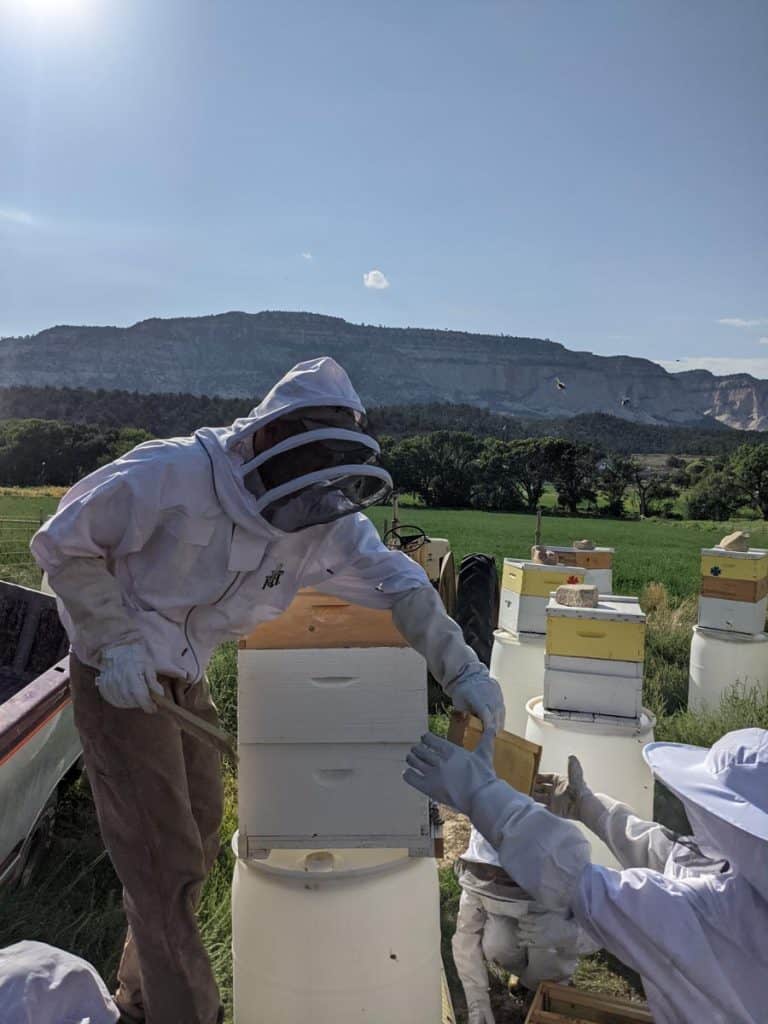
It took hours in the hot sun in the suits to pull the heavy honey boxes (they can weigh over 50 pound per box!) and put on the new boxes. Then we packed them all to our garage to work on taking the honey out of the frames!
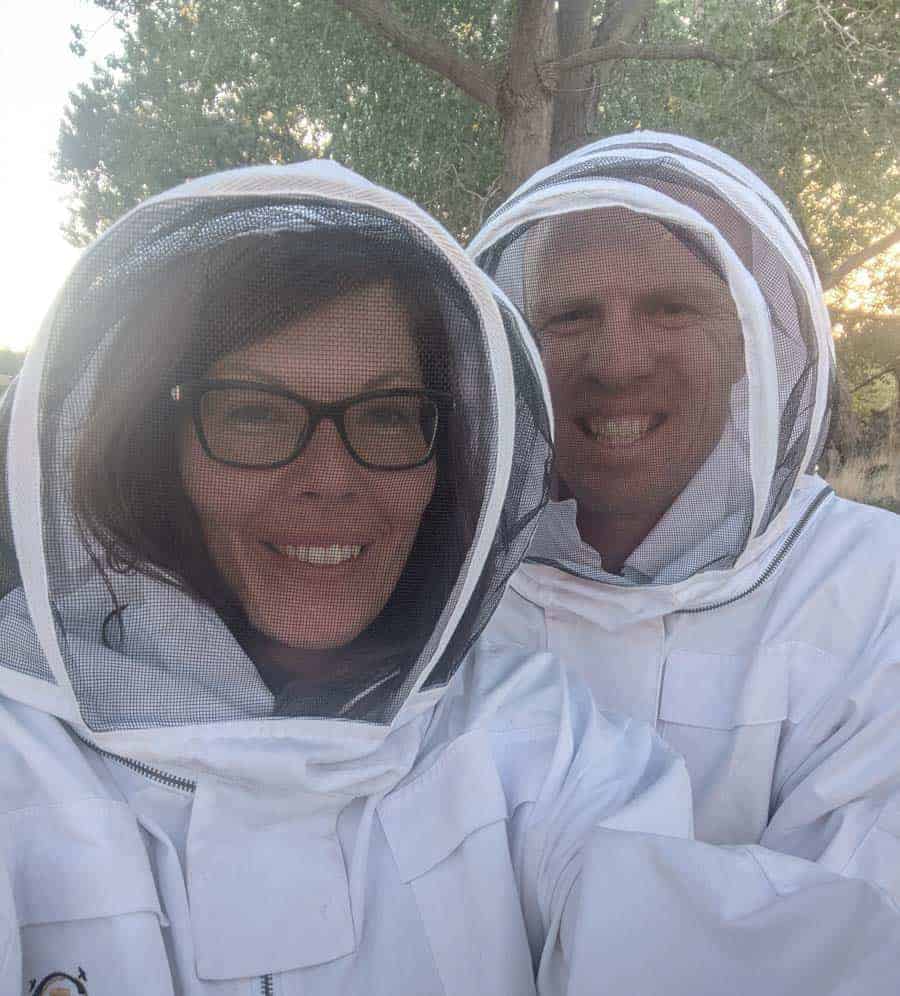
It took us days to get all the honey out! Thomas used a heated knife to cut the top of the comb off (it removes the caps the bees put on the comb to keep the honey in) and then he put the frames, two at a time, into a barrel essentially that holds them and then he spun a handle around that spins the frames. The force and motion of the spinning flips the honey out to the sides of the barrel and it all runs to the bottom where you open a little valve and out comes your honey! It sound simple enough but to use such a small hand-powered machine for 130 frames; it took a LONG time.
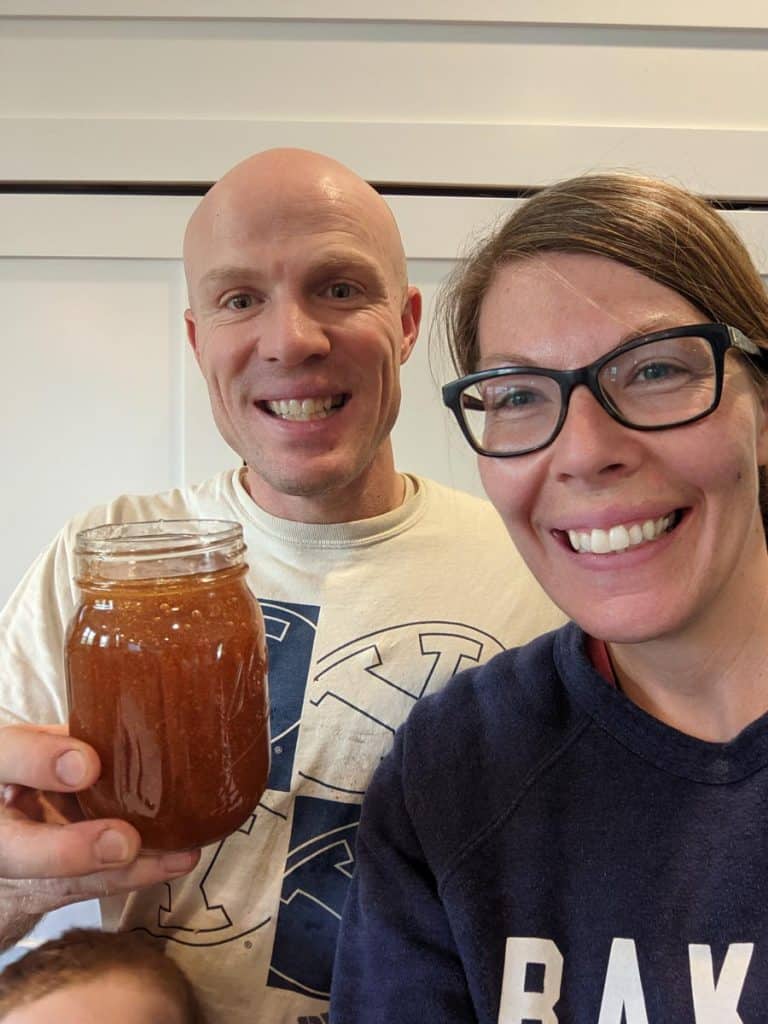
You wouldn’t believe how sticky everything was too. The garage was SO sticky but it tracked into the house and I felt like every door handle, kitchen cabinet handle, and floor surface was covered in honey residue. Your shoes made so much noise just walking in the house. It took days and days to prepare, do, and then clean up the honey harvest. And it was days and days of work!
We ended up harvesting 15 gallons of honey!
And I now understand why small batch, local, raw honey costs so much. We charge $8 for a half pint, $15 a pint, and $25 for a quart. That felt SO expensive to ask, but even at those prices it will take us more than 3 years to cover our start up expenses. Isn’t that wild?! That’s not counting any time that we have put in to it. I still have some, if you want me to ship you some, I’d love to! Just send me an email.
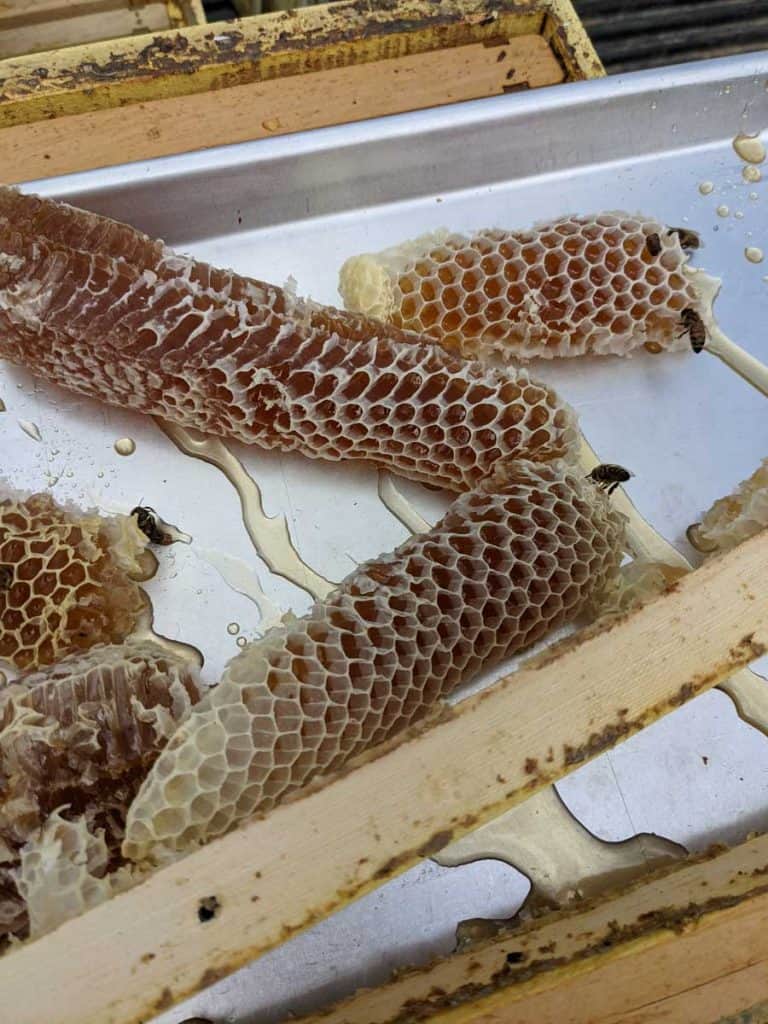
We didn’t take the “feeder” out when we stopped feeding them in the summer and they all filled up the space with natural comb! I ended up with almost 10 pounds of natural honeycomb like this; I sold most of to a local restaurant! That felt really neat to do. I kept just enough for me to do some pretty cheeseboards with this holiday season.
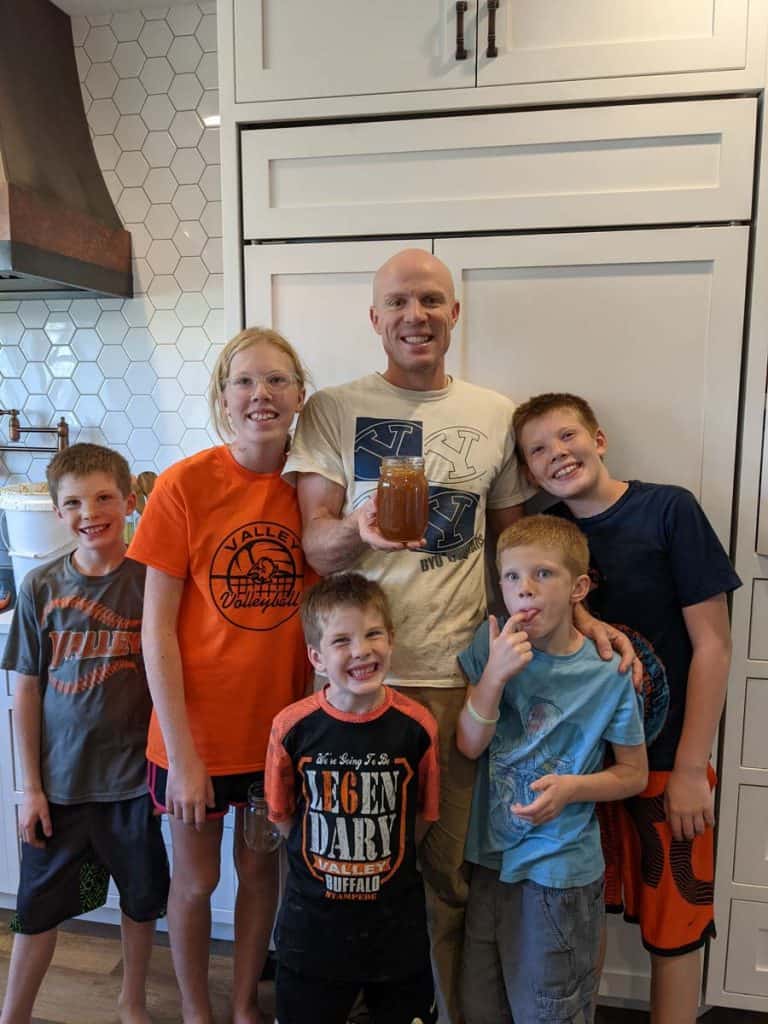
All in all we learned that bees and honey are a lot of work. We were super proud of ourselves for learning soooo much this first year about beekeeping. The kids did so well with the bees, even with getting stung (3 out of the 5 kids got stung and it was a learning experience for sure). We watched some documentaries and learned a lot about bees, and they are literally tiny miracles. Bees are incredible and I think God made them just as a sweet gift to man. What incredible creatures. And who knew insect vomit could taste so good?
The hope for the future is that our hives do well over the winter. It’s normally to lose 30-50% of your bees over the winter (whaaatttt?!). We have three really strong hives, 3 obviously weaker hives, and 4 that seems pretty normal. We assume we’ll lose the 3 weakest and we think the 3 largest will be healthy enough to split into two hives in the spring. That’s the hope anyhow and only time will tell.







I learned so much from this post! Thanks for all the detail about beekeeping! You and your family are awesome, it’s been such a pleasure to follow you all these years.
The natural honeycomb is beautiful. What did the restaurant do with it?
They are putting it on cheeseboards! They also made some pretty fry bread at an event and served it with the fry bread!
Melissa, how exciting for your family! Hard work, too. My cousin has kept bees. We also have hives in our neigborhood. They love the Rose of Sharon. I taught at a school with Russian Sage bushes planted around the school. It is a relative of lavender, but grows a lovely 3-4 foot foundation planting. The bees loved these bushes, always gathering nector. The flowers made the bees so gentle, the children would put them in their palms and stroke them with a finger. No one was ever stung. Have fun with your bees, and save plenty of honey for your family.